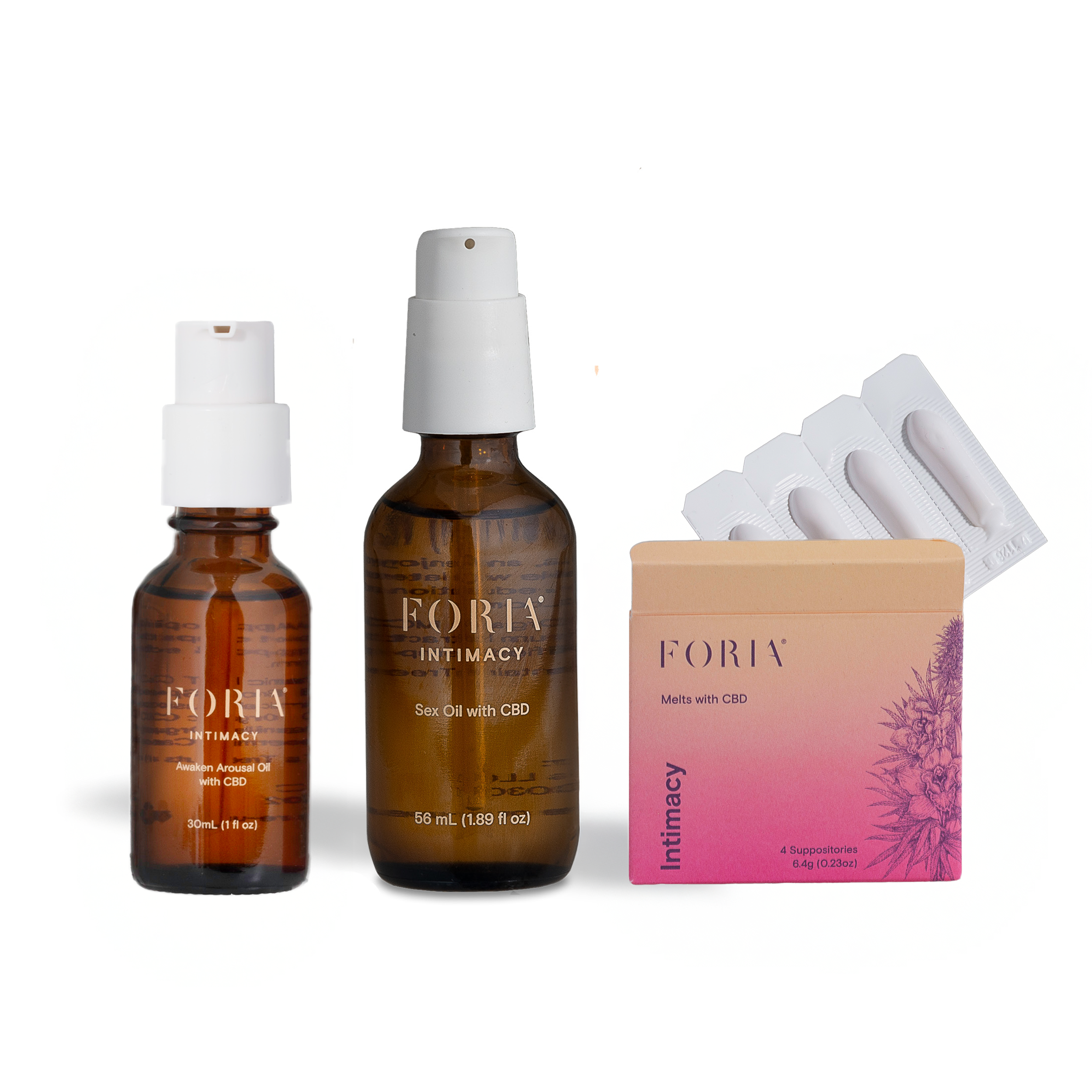Tantra and Tantric Sex Practices 101 With Tugce Balik
From lingam massage to tantric edging techniques
Talk Pleasure to Me is our series where we talk to experts on sex, relationships, and caring for your body (& mind) so you can get inspired on your pleasure journey and learn from the best.
American Board Certified Sexologist and Authentic Tantra® Practitioner, trained in Tibetan 5 Elements Tantra from the Shangpa Kagyu lineage. Tugce Balik integrates ancient wisdom with modern science to support holistic healing, embodiment, and lasting transformation. Pleasure is your birthright, and your body holds all the answers you desire — she just helps you get there.
What is Tantra?
Tantra is an ancient spiritual science practiced in various forms for over 10,000 years. Contrary to the many ways in which Tantra is misrepresented in Western society, Tantra is an ancient spiritual science with many different roots and branches manifesting as various traditions, lineages, and practices. Some Tantric lineages include esoteric and practical teachings on using sexual pleasure as a vehicle for healing and transformation of consciousness. Many do not.
Most "Tantra" being offered in Western society is not actual, or "authentic" tantra, and is in fact a gross misrepresentation of these ancient spiritual traditions. Adding to the confusion regarding the tantric meaning, there can be multiple classifications and orientations to practice.
In its most authentic form, Tantra is not about sex — it is about healing. It is a spiritual path that uses the body, breath, sound, and movement as tools to purify and transform the mind. Through practice, Tantra helps us embody presence, cultivate compassion, and experience deep connection with ourselves and others.
I’ve trained and practiced within Vajrayana Tantra, under the Shangpa Kagyu lineage which also includes Tibetan Five Element Tantra.
What is tantric sex?
Tantric sex is not a technique but a state of being. It refers to a slow, conscious, presence-based approach to intimacy. It invites couples to shift away from goal-oriented sex and instead engage in practices that prioritize connection, breath, and energy exchange (AKA energy body yoga).
The focus isn’t on orgasm or performance, but on tuning into the body, being in relationship with sensation, and allowing that presence to deepen intimacy.
In the Tibetan Five Element lineage, sexual union is seen as a powerful method of healing and spiritual practice. When practiced with intention, tantric sex can help release trauma, expand intimacy, and nourish the nervous system. It becomes a form of sacred connection that supports not just pleasure, but also emotional and energetic well-being.
Are there specific sex positions in tantric sex?
Tantric sex isn’t defined by a set of positions — it’s defined by the quality of presence, connection, and energetic awareness you bring to your intimacy. What makes sex “tantric” is the ability to activate and move energy through the body, together. This goes far beyond the Westernized lens of Tantra, which often reduces the practice to eye gazing and synchronized breathing. That version is better described as neo-Tantra.
In truth, any position can be tantric if it’s approached with intention and knowledge. That said, positions that allow for face-to-face connection, eye contact, and breath coordination can be especially helpful for cultivating intimacy and energetic alignment. But it’s not about the shape your bodies are in — it’s about how you’re showing up in the moment.
Is a tantric orgasm different from a "standard" orgasm?
Yes. A tantric orgasm is not limited to genital sensation or climax. It can be full-bodied, energetic, and expansive. Fun fact: women can have over 14+ types and men can have 11+ types of orgasms! Through breath and awareness, you can experience waves of pleasure that move through the entire body, sometimes without ejaculation or a “traditional” peak orgasm. These orgasms can last longer, feel more nourishing, and create a sense of emotional release or spiritual connection.
How does edging (or orgasm control) play into tantric sex?
Edging — the practice of approaching orgasm and then backing off — is a foundational skill in Tantric sexual yoga. It helps build more awareness of the arousal curve, allowing sexual energy to circulate through the body instead of being immediately released. This expands your capacity for sensation, presence, and pleasure.
For people with penises:
Edging is often the first step in developing ejaculation mastery — the ability to choose if and when to ejaculate, rather than feeling hijacked by orgasm. Through edging, the nervous system learns how to stay with rising arousal without tipping over into climax. Over time, this practice can lead to full-body energetic orgasms, semen retention (choosing not to ejaculate at all), and the ability to experience multiple orgasms without ejaculation.
It’s important to note: edging is not the same as semen retention. Semen retention is a separate practice where ejaculation is intentionally avoided for energetic, spiritual, or health reasons. Edging, on the other hand, is a training ground — a way to become more aware of and skilled with your sexual energy.
For people with vulvas:
Edging looks a bit different. It can be used to build up to more powerful or multiple orgasms by playing with your own “edge,” but in tantric practice, there's also a distinct approach called orgasmic awareness. Rather than building toward release, orgasmic awareness focuses on softening into arousal — noticing the waves of pleasure, allowing energy to move, and being present with sensation, whether or not orgasm happens.
This practice expands your capacity to feel more, stay in pleasure longer, and access states of deep internal bliss — all without needing to climax to complete the experience.
Tantra is sometimes known as the "yoga of sex": How do these practices overlap?
Depending on what Tantra you are practising, Tantra is energy body yoga. Both involve breath, movement, and meditation. When people refer to Tantra as the yoga of sex, they’re speaking to how tantric practices bring mindfulness and embodiment into the realm of sexuality. It’s about being fully present with your sensations, emotions, and partner.
What is tantric meditation?
In the Tibetan lineage, we use Five Element Tantra meditations — earth, water, fire, air, and space (a different form of the 7 chakras many people are aware of). These aren’t just symbolic; they correspond to specific organs, emotions, and energies in the body. Through breath, sound, and visualization, these meditations help heal your energy, emotional and physical body. When practiced regularly, they form the foundation for a healthy and resilient system.
Can someone practice tantric meditation at home?
Absolutely. A simple way to begin is by practicing 21 conscious breaths. Sit comfortably, have your eyes open on a soft gaze, keep your spine straight, tongue on the roof of your mouth and bring awareness to your inhale and exhale. Count 21 breaths without losing focus, counting after each exhalation. If your mind wanders, start again. It’s deceptively simple and profoundly effective. You don’t need elaborate rituals or complex techniques to start — just your breath and your presence.
What is a tantra massage?
Tantra massage is a form of touch that integrates sexual and/or non-sexual full-body massage with conscious breath, touch, and awareness. It is used to awaken the body, release stored tension or trauma, and support a deeper connection to pleasure. When done with skill and care, it can be deeply healing. There are many different styles of tantra massage, but the foundation should always be safety, consent, and clear intention.
What is a lingam massage? How can someone practice giving a lingam massage at home?
We’ll cover this in more detail during the workshop, but briefly: a lingam massage is a practice focused on the penis ("lingam" is the Sanskrit word for phallus). It is not a handjob — the purpose is not release, but exploration and presence. The giver uses conscious touch to awaken sensation, help the receiver relax, and bring awareness to areas of tension or numbness. It can be a powerful practice for releasing shame, increasing sensitivity, and building trust.
What is a yoni massage? How can someone practice giving a yoni massage at home?
Also something we’ll explore more in the workshop. A yoni massage is a sacred practice focused on the vulva and vagina ("yoni" means "sacred space"). It is designed to bring healing, release trauma, and restore sensitivity. It can be emotional, erotic, or neutral, depending on the intention and context. The most important thing is that it is practiced with consent, slowness, and reverence. The receiver is always in control.
Want to learn more about vaginal massage? Read our blog here
How can someone vet a practitioner who offers yoni massage or tantric services?
This is important, especially as Tantra becomes more popular and commercialized. To ensure someone is offering authentic tantric services and not just sexological bodywork, ask the following:
-
What lineage do you practice from?
-
Who is your teacher?
-
Who is your root lama (if they claim to practice Tibetan Tantra)?
If they cannot answer these questions clearly, they are not practicing traditional Tantra. That doesn’t necessarily mean their work isn’t valuable — but it does mean it’s not rooted in an authentic lineage. True tantric practice requires years of training, transmission, and ethical accountability.
Are there any tools or toys you recommend for couples looking to explore tantra?
Start with simple tools: coconut oil for massage, eye masks to deepen sensory awareness, and bolsters or cushions for comfort during extended touch. Breath and presence are the most important "tools" you need. For more advanced exploration, yoni eggs and crystal wands can be supportive — but only if used with education and care.
Final words for beginners?
You don’t need to be an expert or have years of meditation behind you to begin. All you need is curiosity, a willingness to slow down, and the intention to connect more deeply with yourself and your partner. Start small. Breathe together. Touch each other without goals but rather with intention. Let pleasure be something you explore, not something you perform. And if it feels right, seek out skilled guidance — this work can be profoundly healing when held with the right support.
Wanna be interviewed for this series?
The Foria Practitioner Program is accepting applications from professionals with expertise in women’s health who wish to recommend Foria products to their clients and professional network To be part of the practitioner program, please apply to our affiliate program. Learn more and apply.
Shop Tugce’s Favs
Pleasure Set
This set includes our top three Intimacy bestsellers that are better together.
$88Want more? Sign up for our newsletter
By entering your email, you are agreeing to our terms and conditions and understand our privacy policy.












